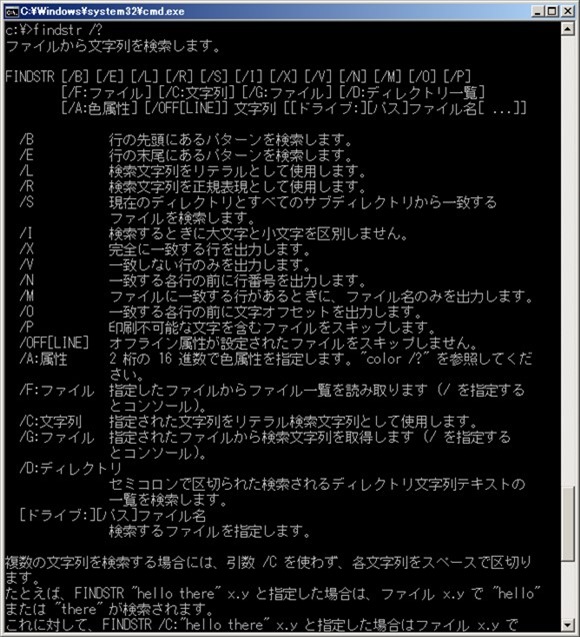Ouf! 26+ Listes de Netstat Windows Grep: If you are used to grep on linux output and thinking how to use grep on windows, its actually a findstr command on the output.
Netstat Windows Grep | Findstr in windows works similarly to grep in unix. However, how would you limit the display to ports attached to a specific process? Using the windows find command, i am able to filter the results with something similar to the grep. Netstat is used to display active tcp connections and related listening ports in the computer or system. I looked at findstr but that doesn't help because the process' executable is not mentioned on the same line as. For example using netstat, normally i want to view only the connections to a certain port numbers. Findstr in windows works similarly to grep in unix. Specify the domain in the command and you will see the filtered connections. Consider you have any of the following requirement how to find who or which process owns the port. To continuously display open tcp and udp connections numerically and also which. Findstr in windows works similarly to grep in unix. Netstat is used to display active tcp connections and related listening ports in the computer or system. For example you can do this: Specify the domain in the command and you will see the filtered connections. If you are used to grep on linux output and thinking how to use grep on windows, its actually a findstr command on the output. (windows xp, windows server 2003 and newer windows operating systems; Using the windows find command, i am able to filter the results with something similar to the grep. For example using netstat, normally i want to view only the connections to a certain port numbers. However, how would you limit the display to ports attached to a specific process? I looked at findstr but that doesn't help because the process' executable is not mentioned on the same line as. Consider you have any of the following requirement how to find who or which process owns the port. To continuously display open tcp and udp connections numerically and also which. If you are used to grep on linux output and thinking how to use grep on windows, its actually a findstr command on the output. To continuously display open tcp and udp connections numerically and also which. I looked at findstr but that doesn't help because the process' executable is not mentioned on the same line as. For example you can do this: (windows xp, windows server 2003 and newer windows operating systems; I looked at findstr but that doesn't help because the process' executable is not mentioned on the same line as. Specify the domain in the command and you will see the filtered connections. However, how would you limit the display to ports attached to a specific process? (windows xp, windows server 2003 and newer windows operating systems; To continuously display open tcp and udp connections numerically and also which. Using the windows find command, i am able to filter the results with something similar to the grep. Consider you have any of the following requirement how to find who or which process owns the port. Netstat is used to display active tcp connections and related listening ports in the computer or system. If you are used to grep on linux output and thinking how to use grep on windows, its actually a findstr command on the output. For example you can do this: Findstr in windows works similarly to grep in unix. For example using netstat, normally i want to view only the connections to a certain port numbers. Netstat is used to display active tcp connections and related listening ports in the computer or system. For example using netstat, normally i want to view only the connections to a certain port numbers. Findstr in windows works similarly to grep in unix. Using the windows find command, i am able to filter the results with something similar to the grep. Specify the domain in the command and you will see the filtered connections. Findstr in windows works similarly to grep in unix. For example using netstat, normally i want to view only the connections to a certain port numbers. Netstat is used to display active tcp connections and related listening ports in the computer or system. However, how would you limit the display to ports attached to a specific process? If you are used to grep on linux output and thinking how to use grep on windows, its actually a findstr command on the output. For example you can do this: Consider you have any of the following requirement how to find who or which process owns the port. Specify the domain in the command and you will see the filtered connections. I looked at findstr but that doesn't help because the process' executable is not mentioned on the same line as. (windows xp, windows server 2003 and newer windows operating systems; To continuously display open tcp and udp connections numerically and also which. Using the windows find command, i am able to filter the results with something similar to the grep.


For example using netstat, normally i want to view only the connections to a certain port numbers netstat windows. Findstr in windows works similarly to grep in unix.
Netstat Windows Grep: Specify the domain in the command and you will see the filtered connections.

0 komentar